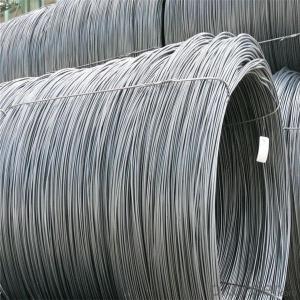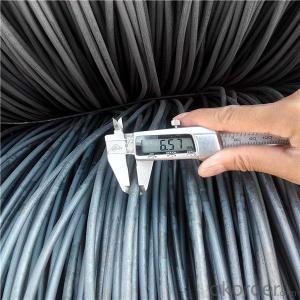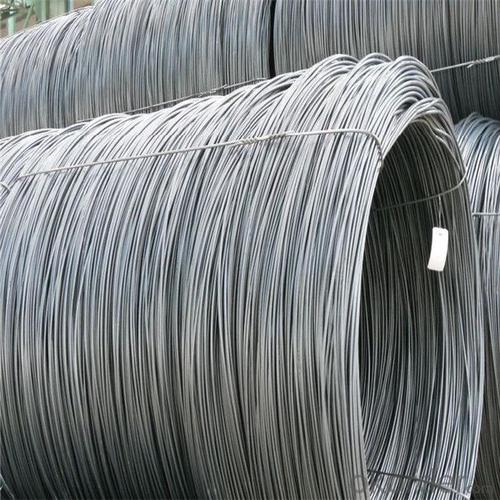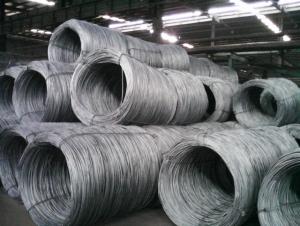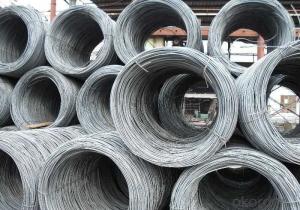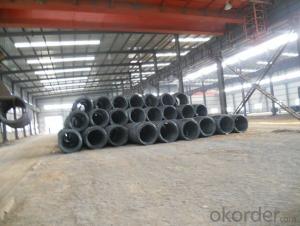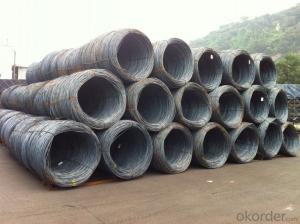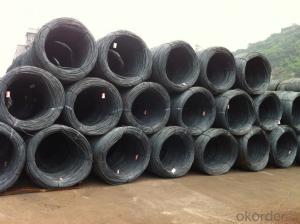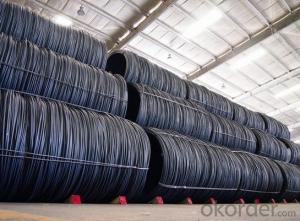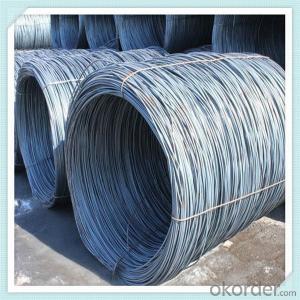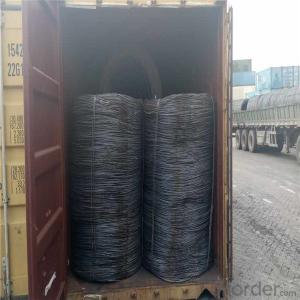Steel wire rod high quality sae1006 10mm low carbon
- Loading Port:
- Tianjin
- Payment Terms:
- TT OR LC
- Min Order Qty:
- 50 m.t.
- Supply Capability:
- 14621 m.t./month
OKorder Service Pledge
OKorder Financial Service
You Might Also Like
Specification
Steel wire is mainly used for prestressed and posttensioning technology in various
shapes of prestressed concrete structures,and widely used for civil engineering
construction, such as large scale railroad, highway bridges, building trusses,
overhead crane beams, industrial and prefabricated concrete floor, wall board,
tubular piles, PC water pipes, TV towers and nuclear power station, ETC.
Mainly used in building and construction as binding wire, tie wire and baling wire; also can be
make for wire mesh.
Our Advantage: High quality steel products from 1 class mills in
Reasonable price
Professionalism of the products
On-time delivery
Complete documents and certificates
Sincere service to meet our clients' requirements
Product Description :
Standard | AISI, ASTM, BS, DIN, GB, JIS |
Material/steel grade | Q195-Q235,SAE1006B,SAE1006CR, SAE1008B, SAE1008CR, SAE1010B, SAE1018B, or according to customers requirements |
Wire Gauge | 5.5-12mm |
Coil weight | 1.8-2.1mts |
MOQ | 25MT |
Delivery Time | 15-30 days after receipt of L/C or deposit by T/T |
Packing | In coil and load in container, if large quantity, by bulk vessel; Can be packed as customers' special requirements |
Payment terms | 1).100% irrevocable L/C at sight. 2).30% T/T prepaid and the balance against the copy of B/L. 3).30% T/T prepaid and the balance against L/C |
Application | widely used in machinery parts, manufacturing industry, electronics industry, metal tools and others |

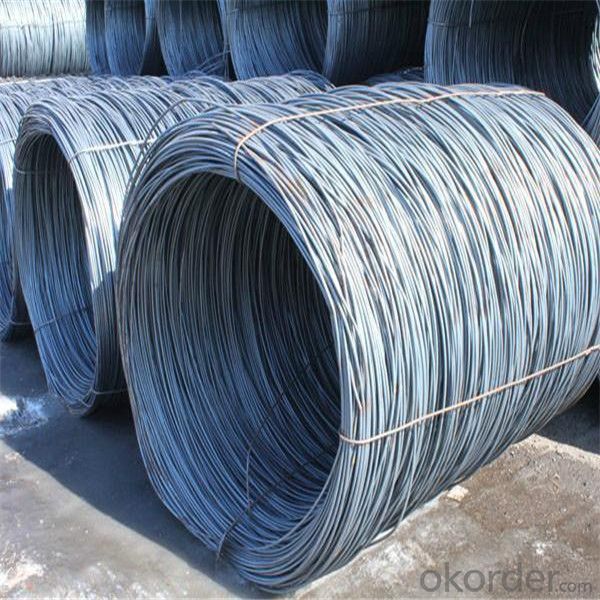
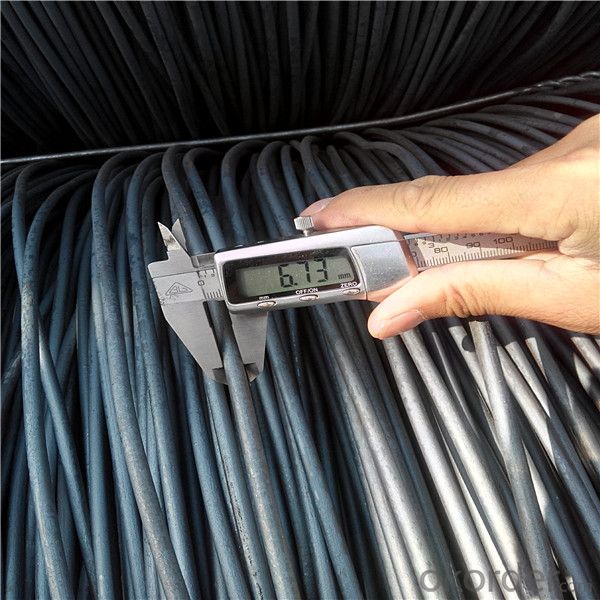
Application :
It generally used in braiding the hose for bathing product and machinery. With it
good flexibility, resistant to high temperature and resistant to corrosion, it
used widely in many industries.
Packing :
Hot-rolled wire rod is held in a unit with at least four steel straps in the
transverse direction and transported and stored without further packaging.
Before
the steel strapping is applied, the wire rod must be sufficiently compressed.
The strapping is fixed in the transverse direction with a single circumferential
strap so that the strapping does not slip and cause the coil to come apart.
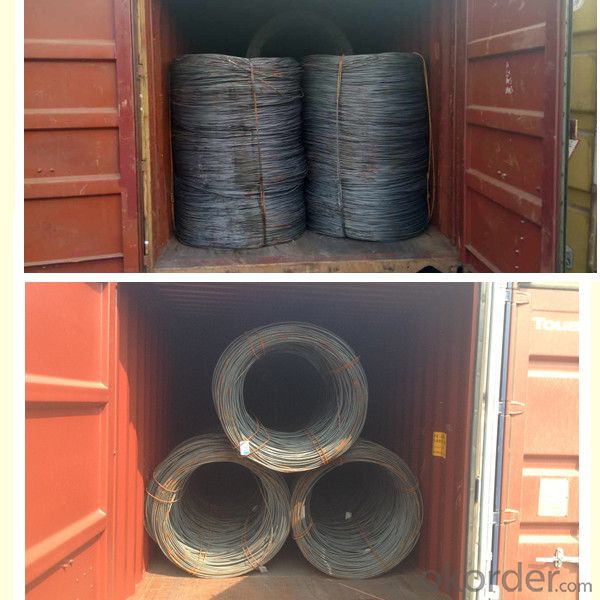
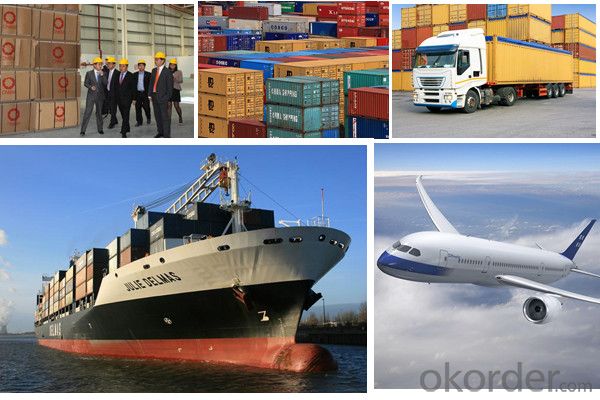
Our service:
(1) We cooperate with famous factories with advanced equipment and well trained workers.
(2) We can provide factory price with trading company service.
(3) We continuously work on the improvement of our processes, guaranteeing
consistently high standards of quality to keep none compensation.
(4) We guarantee 24 hours response and 48 hours solution providing service.
(5) We accept small order quantity before formal cooperation.
(6) We deliver the agreed quality at the agreed time, reacting to changes in
customer wishes in a flexible way.
(7) Due to our volume and selling power, we have excellent freight rates with
shipping lines.
(8) We strive to always be fair and honest in our dealings with customers.
(9) We strive to work together with customers to achieve much more than we can
achieve alone.
(10) Through our passion and commitment we aim to be a market leader in all our
key markets. To maintain our position as market leader we must continue to add
value in all that we do.
FAQ:
1.Q: What's your MOQ(minimum order quantity)?
A: One full container, mixed acceptable .
2. Q: What's your packing methods?
A: Packed in bundle or bulk ..
3. Q: How can I buy CNBM products in my country?
A:Please send us an inquiry or email ,we will reply to you if there is distributor in your country
4. Q: Can we visit your factory?
A: Warmly welcome. Once we have your schedule, we will arrange the
professional sales team to follow up your case.
5. Q: How long does it take to get the product if i place an order?
A:With the process of your requirements,we will pack and deliver in 3
-7 days. If it is by sea shipment,it will take 15-45 days depending on different locations
- Q: How is steel wire rod heat treated to improve its mechanical properties?
- Steel wire rod is typically heat treated through a process called annealing, which involves heating the rod to a specific temperature and then slowly cooling it. This process helps to remove any internal stresses and refine the microstructure of the steel, resulting in improved mechanical properties such as increased strength and hardness.
- Q: How are steel wire rods used in the manufacturing of nails?
- When manufacturing nails, steel wire rods play a vital role. These rods, usually made from high-quality steel known for its strength and durability, are crucial components. To begin the process, the appropriate steel wire rod is carefully selected based on the desired nail specifications. The diameter and tensile strength of the rod are chosen with great care to ensure that the final nail meets the required standards. Once the steel wire rods have been chosen, they are introduced into a nail-making machine. This machine is composed of different sections that collaborate to transform the wire rod into a nail. The first section of the machine is responsible for straightening the wire rod, ensuring its correct alignment. Then, the rod is passed to the cutting section, where it is cut into the desired length for the nail. Following that, the rod enters the forming section, where it is shaped into the nail's basic structure. This section employs a combination of mechanical force and heat to mold the wire rod. After the forming process, the nail goes through a series of rollers and dies to refine its shape and enhance its strength. These rollers and dies give the nail its characteristic head, shank, and point. Lastly, the nails are cooled and subjected to quality control inspections. Any defective nails are discarded, while the acceptable ones are collected and packaged for distribution. In conclusion, steel wire rods are indispensable in the manufacturing of nails. They provide the necessary raw material to create sturdy and reliable nails. The strength and durability of steel make it an ideal material for nails, enabling them to withstand the pressures and forces they will encounter during use.
- Q: How does the carbon content affect the properties of steel wire rod?
- The carbon content in steel wire rod affects its properties by influencing its strength, hardness, and ductility. Higher carbon content generally leads to a stronger and harder wire rod with reduced ductility and increased brittleness. Conversely, lower carbon content results in a softer and more ductile wire rod with reduced strength. The carbon content also affects the wire rod's ability to be welded and its resistance to corrosion. Therefore, the carbon content plays a critical role in determining the overall performance and suitability of steel wire rod for various applications.
- Q: What are the common industry skills for steel wire rod manufacturers?
- Some common industry skills for steel wire rod manufacturers include knowledge of steel production processes, proficiency in operating machinery and equipment used in the manufacturing process, understanding of quality control procedures, ability to read and interpret technical drawings and specifications, knowledge of safety protocols, and strong problem-solving and troubleshooting skills. Additionally, effective communication and teamwork skills are important in coordinating with colleagues and other departments within the manufacturing facility.
- Q: How is steel wire rod used in the manufacturing of razor wire?
- Razor wire manufacturing heavily relies on steel wire rod, an indispensable component. This wire rod serves as the main material used to produce the sharp, barbed edges that make razor wire an effective security barrier. To achieve its desired characteristics, the wire rod undergoes a process of being drawn through multiple dies, resulting in reduced diameter and increased tensile strength. Consequently, this process yields a highly durable and flexible wire that can withstand significant tension and pressure. Once the wire rod has undergone the drawing process, it is then twisted or braided to form a helical pattern, thus creating the distinct barbed structure that razor wire is known for. Through this twisting process, sharp and pointed edges are formed along the wire, serving as a deterrent and providing an effective barrier against intruders. In addition to forming the barbed edges, steel wire rod is also employed in connecting the individual barbs, ensuring a coherent and secure structure. Typically, the wire rod is woven or welded between adjacent barbs, guaranteeing that the razor wire maintains its shape and integrity. This interconnecting process significantly improves the overall strength and stability of the razor wire, making it an effective deterrent and obstacle. In conclusion, steel wire rod plays a critical role in the manufacturing of razor wire, providing the necessary strength, flexibility, and sharpness required for an efficient security barrier. Its ability to be drawn, twisted, and connected enables the creation of a formidable and reliable product, widely utilized in military installations, prisons, and high-security areas.
- Q: How is steel wire rod used in the manufacturing of wire for automotive seat belts?
- Steel wire rod is used in the manufacturing of wire for automotive seat belts as it serves as the primary raw material. The rod is first drawn through a series of dies to reduce its diameter and increase its strength. This process, known as wire drawing, ensures that the wire meets the required tensile strength and flexibility standards necessary for seat belt manufacturing. The wire is then further processed, including heat treatment and coating, to enhance its durability and resistance to corrosion. Ultimately, the steel wire rod plays a crucial role in providing the strength and reliability needed for automotive seat belts to effectively restrain passengers during accidents.
- Q: What are the different types of steel wire rod drawing processes?
- The manufacturing industry utilizes several distinct steel wire rod drawing processes to transform steel wire rods into different shapes and sizes for diverse applications. These processes aim to cater to specific industry needs. Some commonly employed steel wire rod drawing processes are: 1. Cold drawing: This process involves the passage of the steel wire rod through a series of dies to decrease its diameter and increase its length. It is carried out at room temperature, often with the wire coated in a lubricant to facilitate the drawing process. 2. Annealing: This process entails heating the steel wire rod to a specific temperature and gradually cooling it to alleviate internal stresses and enhance its ductility. Annealing is frequently performed after cold drawing to enhance the wire's mechanical properties. 3. Tempering: This process is employed to further enhance the wire's mechanical properties by subjecting it to a specific temperature and then rapidly cooling it. Tempering aids in augmenting the wire's strength and toughness. 4. Coating: Steel wire rods can undergo a coating process to boost their corrosion resistance or improve their appearance. Common coating methods include galvanizing, where a layer of zinc is applied to the wire's surface, and electroplating, where a thin layer of another metal is deposited onto the wire. 5. Stranding: This process involves amalgamating multiple steel wire rods into a single strand. The individual wires are twisted together to form a stronger and more flexible strand, which is often utilized in applications like ropes and cables. 6. Drawing with intermediate annealing: In this process, the steel wire rod is cold drawn multiple times, with intermediate annealing steps in between. This helps in further reducing the wire's diameter and enhancing its mechanical properties. In conclusion, these various steel wire rod drawing processes enable manufacturers to produce wires with diverse properties, sizes, and shapes to meet the specific requirements of different industries and applications.
- Q: What are the alloying elements used in steel wire rod production?
- The alloying elements used in steel wire rod production can vary depending on the desired properties of the final product. However, some common alloying elements used in this process include carbon, manganese, silicon, and sometimes chromium, nickel, or molybdenum. Carbon is one of the most important alloying elements in steel wire rod production as it enhances the strength and hardness of the steel. The carbon content is typically kept within a specific range to achieve the desired mechanical properties. Manganese is another commonly used alloying element in steel wire rod production. It helps improve the strength and toughness of the steel and also enhances its hardenability during the heat treatment process. Silicon is often added to the steel to improve its resistance to oxidation and to enhance its electrical conductivity. It can also help control the grain size of the steel, which affects its mechanical properties. In some cases, chromium is added to steel wire rod to improve its corrosion resistance and to enhance its hardenability. Nickel is another alloying element that can be used to increase the strength and toughness of the steel, while molybdenum can improve its high-temperature strength and creep resistance. It is important to note that the specific alloying elements and their concentrations used in steel wire rod production can vary depending on the specific requirements of the final application. Steel manufacturers carefully select and adjust these alloying elements to achieve the desired mechanical, electrical, and chemical properties in the wire rod.
- Q: How is the quality of steel wire rod ensured during manufacturing?
- The quality of steel wire rod is ensured during manufacturing through various processes and measures. These include rigorous inspection of raw materials, adherence to strict production standards, and continuous monitoring of the manufacturing process. Additionally, advanced technologies such as spectroscopy and non-destructive testing are used to detect any defects or impurities in the steel wire rod. Furthermore, regular quality control checks are conducted to ensure that the product meets the required specifications and performance standards.
- Q: What are the main factors affecting the market reputation of steel wire rod?
- The main factors affecting the market reputation of steel wire rod include the quality and consistency of the product, customer satisfaction, pricing competitiveness, reliability of supply, adherence to industry standards and regulations, technological advancements, and the reputation of the manufacturer or supplier.
Send your message to us
Steel wire rod high quality sae1006 10mm low carbon
- Loading Port:
- Tianjin
- Payment Terms:
- TT OR LC
- Min Order Qty:
- 50 m.t.
- Supply Capability:
- 14621 m.t./month
OKorder Service Pledge
OKorder Financial Service
Similar products
Hot products
Hot Searches
Related keywords
